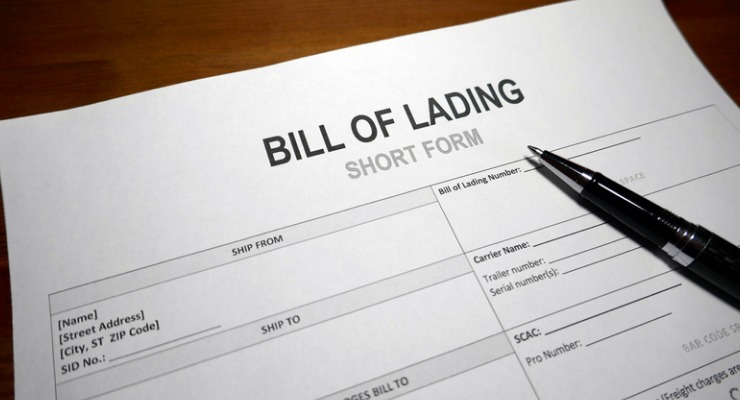
When it comes to shipping goods, the Bill of Lading is the proverbial bible. Those pieces of paper show who has received the goods, where they have come from, where they are going and what payments are due. ‘Lading’ comes from the old English term meaning ‘loading’. A bill of lading is one of the most important shipping documents so if you’re importing or exporting you need to understand it.
What is a Bill of Lading?
A Bill of Lading (BOL) is a document that confirms goods were received in sound condition and are on board a ship ready for delivery. It is a legally binding document for the contract of carriage between the carrier/s and cargo owner and can serve as proof of ownership - title - of the goods being transported.
The BOL documentation information includes:
- Terms of contract of carriage
- Date and receipt that goods were loaded onto the ship
- Loading and destination ports
- Details of goods including numbers, weight, size, value)
- Consignee/receiver name and contact information
- Any special shipping instructions
If there are any disputes, lawyers examine the BOL to help decide the outcome. Getting the details right on the BOL are essential as it will likely be a key factor if there is any dispute over ownership or damage to the goods during transport.
The Functions of a Bill of Lading
The three main purposes of the Bill of Lading include:
- Receipt that goods have been handed over and loaded – proves the goods (as described in the BOL) have been received by the carrier and loaded
- Outlines the terms of the Contract of Carriage – proves there is a contract between the cargo owner and shipper and the start/end points of the contract
- Document of Title to the Goods – allows the legal owner/consignee to collect the goods at the destination
Types of Bill of Lading
Several types of BOL are needed to cover all scenarios for the transportation of goods including:
Ocean – for goods being transported by sea (also called port to port bill of lading)
Airway – for goods being transported by air
Inland – for goods being transported by road or rail
Multimodal – for goods being transported by multiple types of transport
Straight – goods are paid in full and delivered direct to the consignee
Through – for goods transported by ocean as far as possible then by road or rail to the destination
Originals – when a consignee hasn’t paid the manufacturer for goods, sets of originals is used to ensure payment is made before releasing the goods
Switch - when goods need to be moved between two shipments and the supplier’s information needs to be kept private, two sets of bills are switched.
Dirty/Claused BOL – the goods are received by the shipper in a damaged condition so the carrier’s insurance company may refuse a claim for damage.
Frequently Asked Bill of Lading Questions
If you aren’t familiar with a Bill of Lading, you will have plenty of questions. Here are some of the more common questions we come across:
What is the Meaning of ‘To Order’ in Bill of Lading?
A Bill of Lading is written ‘to order’ or to the instructions of the consignee. Ownership of the goods is transferred from one party to the next by signatures upon delivery.
What is a Bill of Lading Number?
Every bill of lading has a unique number assigned at the time goods are received for shipment.
Who Gets a Copy of the Bill of Lading (BOL)?
There are three copies of a BOL provided to –
1. The shipper
2. Broker or third party
3. The consignee, usually the buyer/receiver
Who is the Consignee?
The consignee is the individual or organisation purchasing or collecting the goods at the final destination.
What’s the Purpose of a Bill of Lading?
The Bill of Lading is confirmation that goods have been delivered to the ship and that payment can be made to the goods’ supplier.
The original Bill of Lading document is couriered to the consignee once payment has been received. The goods are released using the original copy of the BOL.
If one of the three copies of a BOL is lost or stolen, it can increase the time and expense of releasing goods. A letter of indemnity for special cases may be needed or a court order for the carrier to deliver the goods. If the goods arrive at port before the replacement paperwork is ready, holding costs may be incurred.
Who Provides a Bill of Lading?
The shipper is the organisation who issues a BOL. The carrier can withhold the BOL and goods until they receive payment for the transport costs.
BOL Charges
A shipping company may impose charges for amendments to a Bill of Lading for a variety of reasons including:
- a change in delivery instructions
- late payment
- late shipping instruction lodgement
- express release fee
- advance manifest fee
- re-issue of BOL
These charges are levied on the number of BOLs requiring amendments or the number of containers affected.
If you need assistance with sourcing a Chinese manufacturer and sorting out the paperwork associated with a Bill of Lading, contact Vara Allied on (08) 6115 0118 or contact us online.